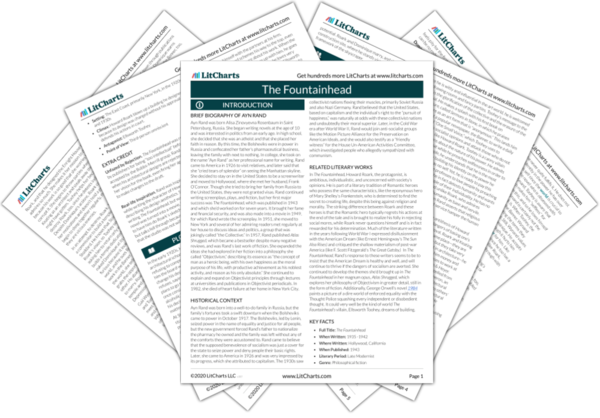Skyscrapers symbolize heroism in the novel by displaying the highest potential of human achievement. They are a concrete realization of the ambition of people’s ideas and their determination to achieve them. Dominique says the New York skyline is “the will of man made visible,” and that it is worthy of worship. Wynand says that while fools think that a skyscraper dwarfs the man who stands in front of it, it is man who made the skyscraper, so that makes him “greater than the structure,” revealing “the heroic in man.” Toohey sees the New York skyline as proof of the heroic too, but he says that these buildings emphasize that most people cannot equal their architects’ talent and are mediocre in comparison—and so the skyscrapers displease him because he sees them as acts of egotism. Henry Cameron was one of the first architects who understood skyscrapers and designed them in “straight, vertical line[s], flaunting their steel and height,” rather than copying the Greeks like his contemporaries were doing. While working on skyscrapers, Cameron decided that “no building must copy any other,” a principle that Roark values highly. Skyscrapers thus emphasize originality, talent, and strength—all high virtues according to The Fountainhead.
Skyscrapers Quotes in The Fountainhead
“I like to see a man standing at the foot of a skyscraper,” he said. “It makes him no bigger than an ant—isn’t that the correct bromide for the occasion? The God-damn fools! It’s man who made it—the whole incredible mass of stone and steel. It doesn’t dwarf him, it makes him greater than the structure. It reveals his true dimensions to the world. What we love about these buildings, Dominique, is the creative faculty, the heroic in man.”
“Do you love the heroic in man, Gail?”
“I love to think of it. I don’t believe it.”

Unlock explanations and citation info for this and every other The Fountainhead quote.
Plus so much more...
Get LitCharts A+









